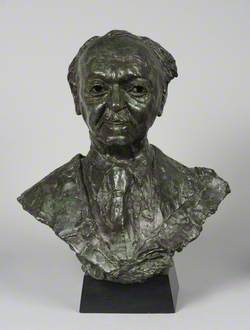How you can use this image
This image can be used for non-commercial research or private study purposes, and other UK exceptions to copyright permitted to users based in the United Kingdom under the Copyright, Designs and Patents Act 1988, as amended and revised. Any other type of use will need to be cleared with the rights holder(s).
Review the copyright credit lines that are located underneath the image, as these indicate who manages the copyright (©) within the artwork, and the photographic rights within the image.
The collection that owns the artwork may have more information on their own website about permitted uses and image licensing options.
Review our guidance pages which explain how you can reuse images, how to credit an image and how to find images in the public domain or with a Creative Commons licence available.
Notes
Add or edit a note on this artwork that only you can see. You can find notes again by going to the ‘Notes’ section of your account.
The most significant English composer of his generation, Ralph Vaughan Williams studied at Cambridge and the Royal College of Music before travelling to the continent for further instructions from Max Bruch and Maurice Ravel. By the outbreak of the First World War, he was gaining an increasingly important reputation. When he was demobilised in 1919, Vaughan Williams joined the teaching staff of the Royal College of Music, where his pupils included Gordon Jacob and Elizabeth Maconchy. The American-born sculptor Sir Jacob Epstein studied in New York and Paris, before moving to London in 1905. Infamous for his expressionistic, often distorted figures, he was a founder member of the London Group, a band of young artists struggling for independence from the dominance of the Royal Academy.
Title
Ralph Vaughan Williams (1872–1958)
Date
1950
Medium
bronze
Measurements
H 40 x W 24 x D 22 cm;
Plinth: H 10 x W 18 x D 19 cm
Accession number
PPHC000310
Acquisition method
gift from Ursula Vaughan Williams, 1961
Work type
Bust













